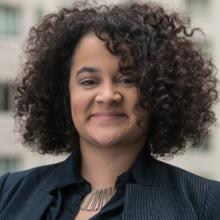On Dec. 3 a Staten Island grand jury decided not to indict New York City police officer, Daniel Pantaleo, in the death of Eric Garner on July 17. The decision arrives less than two weeks after a grand jury on Nov. 24 reached a similar decision in the case of Ferguson, Mo., police officer, Darren Wilson, who shot and killed 18-year-old Michael Brown on Aug. 9.
On Nov. 25, a day after the Ferguson decision, I marched along with my fellow New Yorkers. The march began on 17th and Broadway and made its way toward Times Square. Following the Dec. 3 grand jury decision in the Garner case, I once again took to the streets with protestors; this march began in Times Square and headed toward Rockefeller Center. While many of the protestors shouted many of the same chants heard during the Nov. 25 march (“NYPD! KKK!”; “Send all killer cops to jail!”; “Hands up! Don’t shoot!”), the vibe in the Garner protest was visibly different.
These individuals were not just protesting a death that occurred miles away in another state; they were chanting against a homicide that occurred in their own backyard, in one of New York City’s boroughs.
As I weaved my way through protestors and cops, I tried to comprehend how each side was feeling. I was unable to get answers from any of the police officers; they politely ignored me and continued marching alongside the protestors, determined to keep them safe despite the rage hurled their way.
When I asked protestors why they marched, one stated, “We march to let the world know being black is not a crime.” Another said the protests were necessary because it was the only way to stop these deaths, stating, “as long as we stand idly by, this will still happen. As long as we keep silent, this will still happen.”
A female protestor gave what was perhaps the most emotional reason for marching: “I don’t ever want to wake up and see my brother’s face on one of these posters.”
One thing was clear: protestors want more than just dialogue. They want action. They want to see changes to a system they see as deeply flawed, broken and prejudiced. Many of the protestors I met with admitted that while much anger was being rightly directed toward individual members of police forces, cops themselves were victims of a broken system. As one protestor eloquently stated, attacking one police officer will not be the solution because “It’s not one…singular cop, it’s the system!”
Olga Segura is an assistant editor at America.








